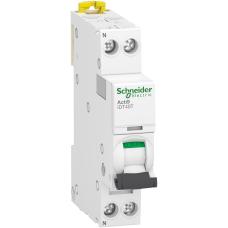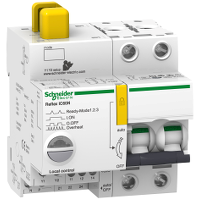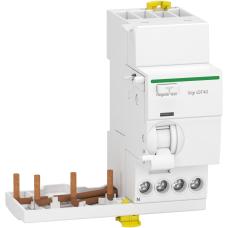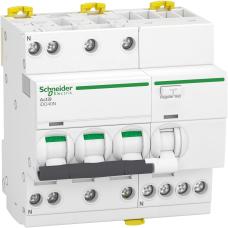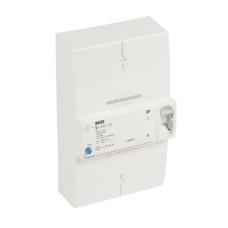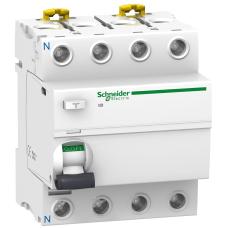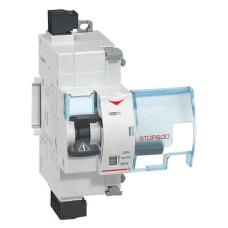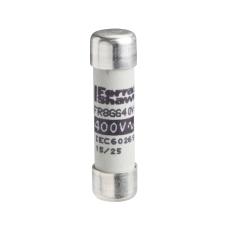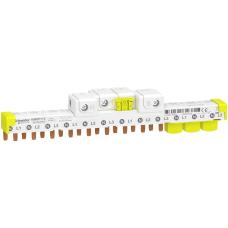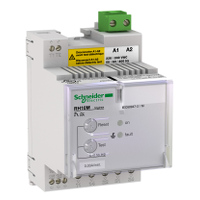Circuit Breakers and Differentials
Take a look at our range of circuit breakers designed to protect electrical installations against faults, as well as…
Our brands
Discover our brands
Circuit breakers and switches
These devices work together to safeguard an electrical installation. The circuit breaker is a modular device that mounts on a Din rail in the electrical panel. It provides thermal protection to a circuit, causing it to trip if it overheats to avoid a fire.
Among circuit breakers, we have the main circuit breaker. Located upstream of the electric panel, it performs a variety of functions, including ensuring the safety of the entire electrical system.
There are various electrical devices that we can refer to as “differential”, including differential circuit breakers, also commonly known as residual current devices (RCDs). You can also find add-on residual current modules and differential switches. Differential circuit breakers (phase + neutral) are modular devices that protect people against the risk of electrocution. This type of switch cuts off the current in case of a current difference between the two circuit conductors, which could indicate a current leak. Explore our extensive selection of Legrand differential devices in our online store.
Which circuit breaker should I choose?
Circuit breakers are electrical protection devices that vary in features and usage. It's important to choose and install the right circuit breakers for each electrical circuit to guarantee the safety and protection of people and property in the event of electrical problems:
- Residential circuit breakers (C curve) are designed to protect appliances and people in the home.
- Various curves are available for commercial and industrial circuit breakers, including the "classic" C curve, the B curve for extended cable runs, the D curve for motor initiation, and the Z curve for electronic circuits.
Identify the affordable circuit breaker you need by considering the following features: type of connection (circuit breakers with screw or automatic terminals), current capacity, voltage, amperage and tripping curve. Take into consideration the brand (Legrand or Schneider Electric circuit-breakers) and the range of electrical fittings to standardise your electrical panel.
Select the circuit breaker based on the electrical circuit that requires protection.
The circuit breaker you choose for your electrical circuit is subject to several factors, particularly the type of circuit that necessitates protection. We recommend you choose a differential circuit breaker to provide electrical protection for circuits supplying outlets and high-risk appliances (such as washing machines, dishwashers or water heaters).
On the other hand, a standard circuit breaker is suitable for protecting circuits supplying less sensitive appliances, such as lighting or sockets not intended for high-risk appliances.
Here are a few examples of circuit breakers to consider, depending on the electrical circuit you wish to protect: In the home:
- Circuit supplying a socket: 16 A differential circuit breaker, 30 mA trip sensitivity*Circuit supplying a washing machine: 20 A differential circuit breaker, 30 mA trip sensitivity
- Circuit supplying room lighting: conventional 10 A circuit breaker, 300 mA trip sensitivity
- Circuit supplying a heating circuit: conventional 16 A to 32 A circuit breaker, 30 mA trip sensitivity
For commercial or industrial installations:
- iC60 circuit breakers: up to 63 A
- C120 circuit breakers: up to 125 A
- NSXm circuit breakers: from 16 A to 160 A
- NSX ComPact circuit breakers: up to 630 A
- NS ComPact circuit breakers: up to 3200 A
- MasterPacT MTZ: up to 6300A
If you're not sure which circuit breaker or differential device to use for your electrical renovation or new-build projects, don't hesitate to contact our technical support department. Our team is on hand to provide you with all the help you need when choosing your electrical equipment online!
